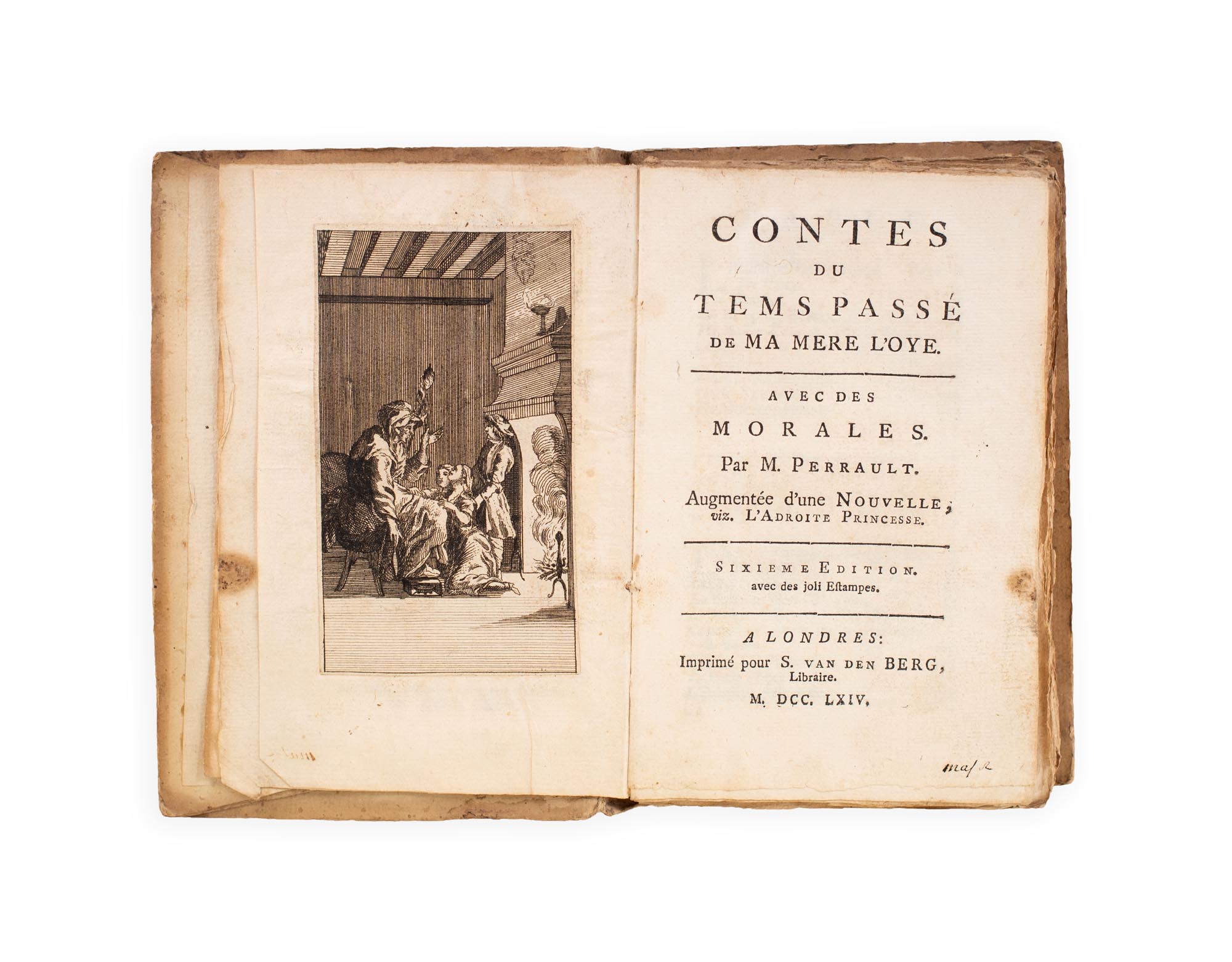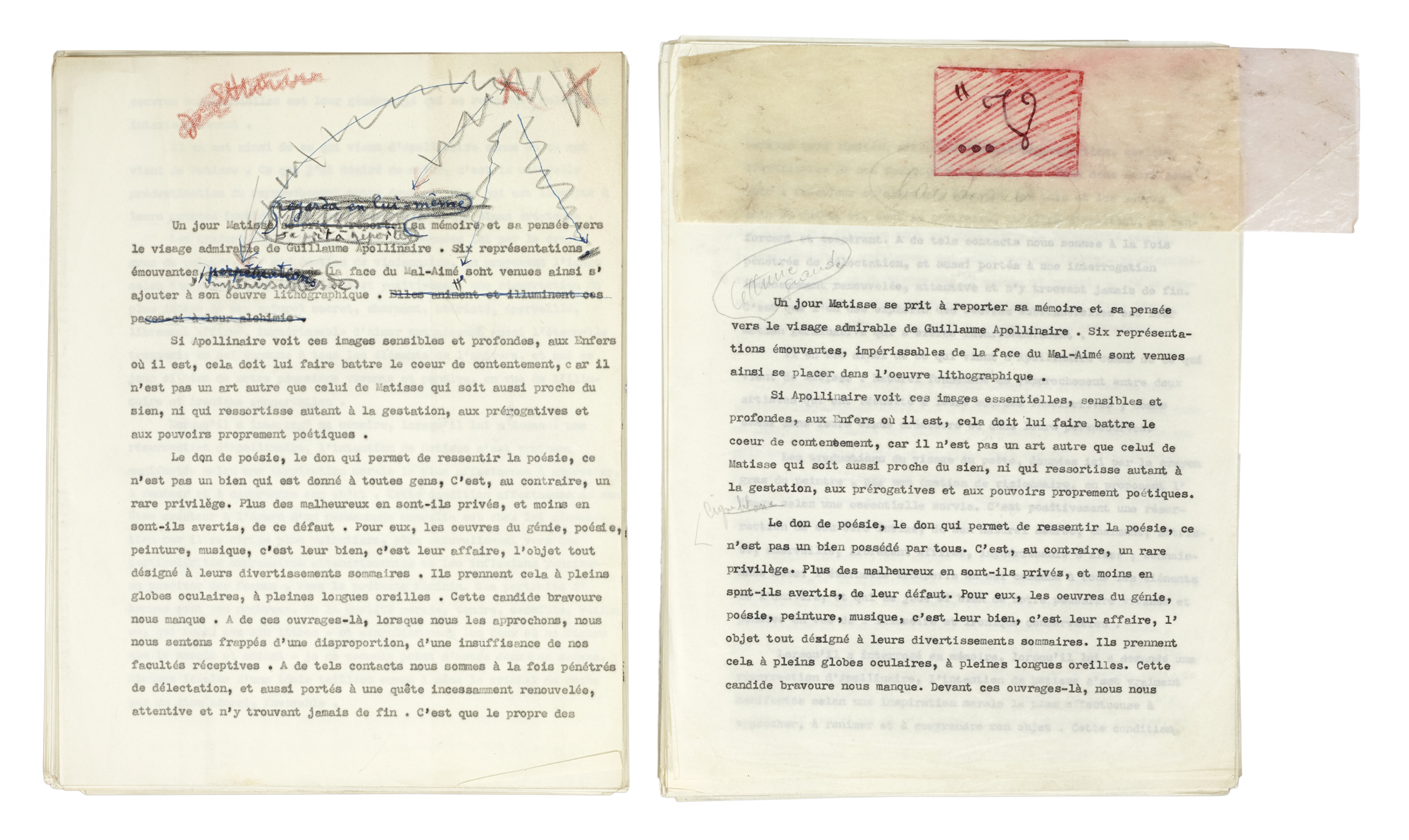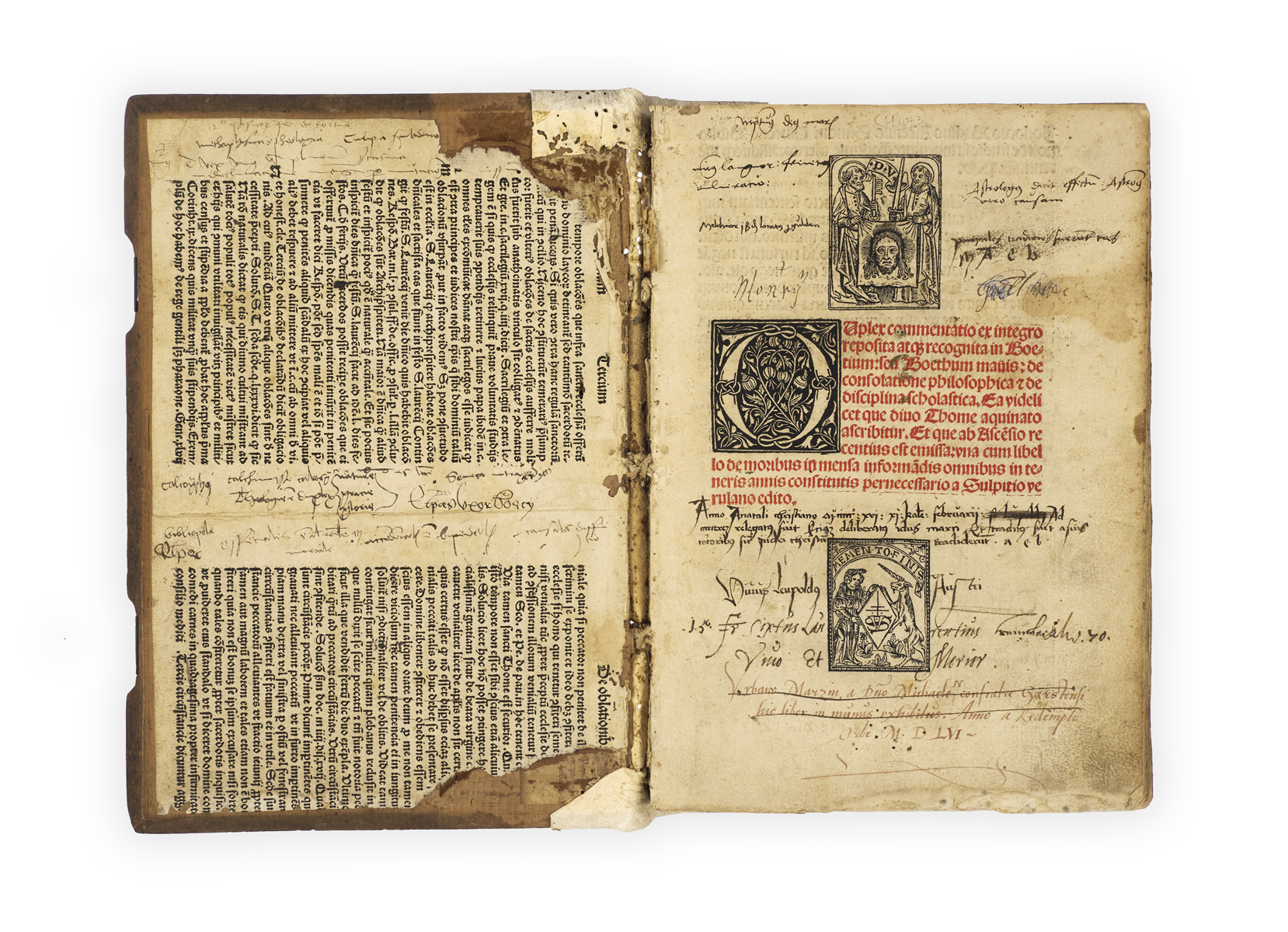
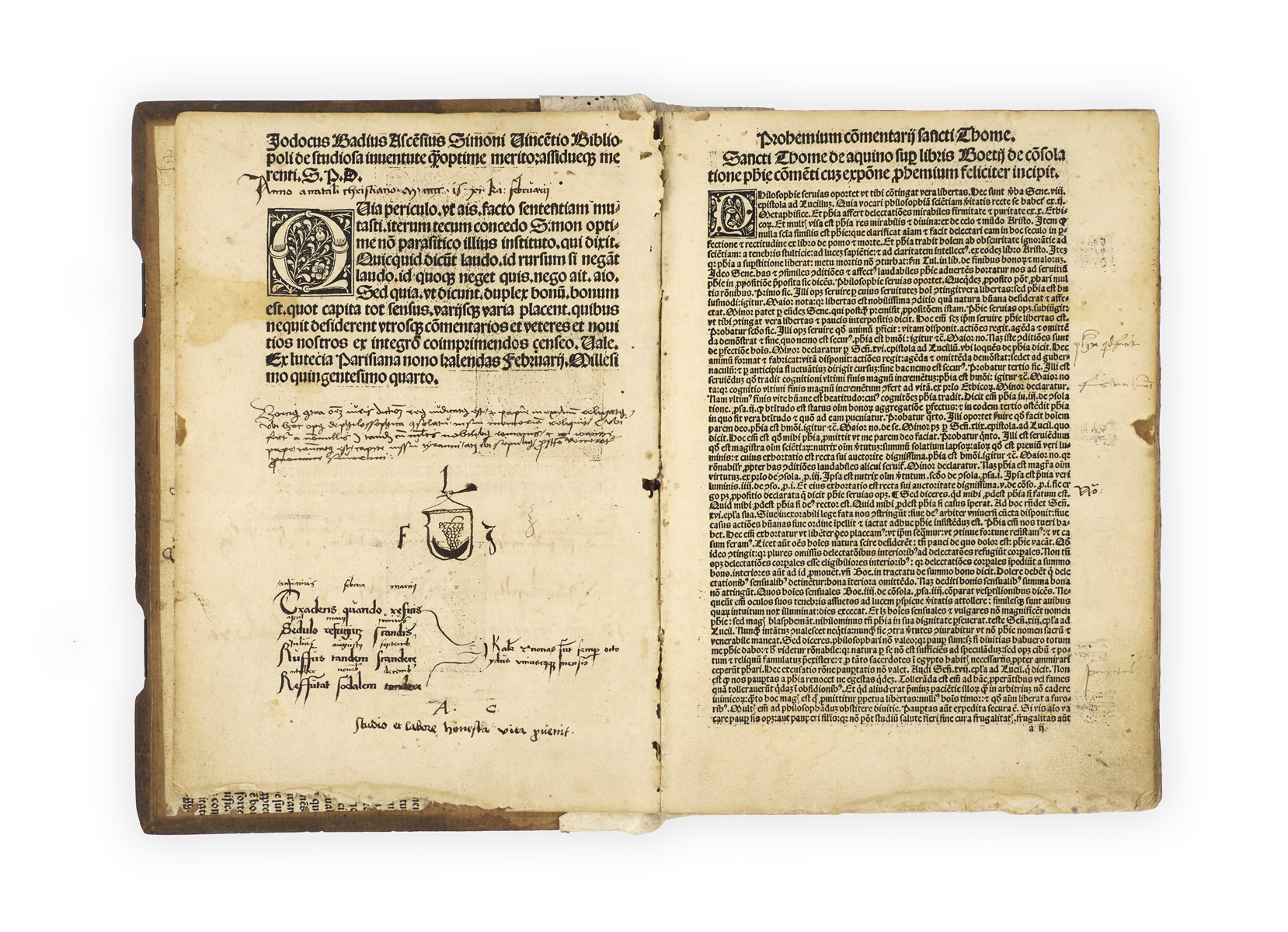
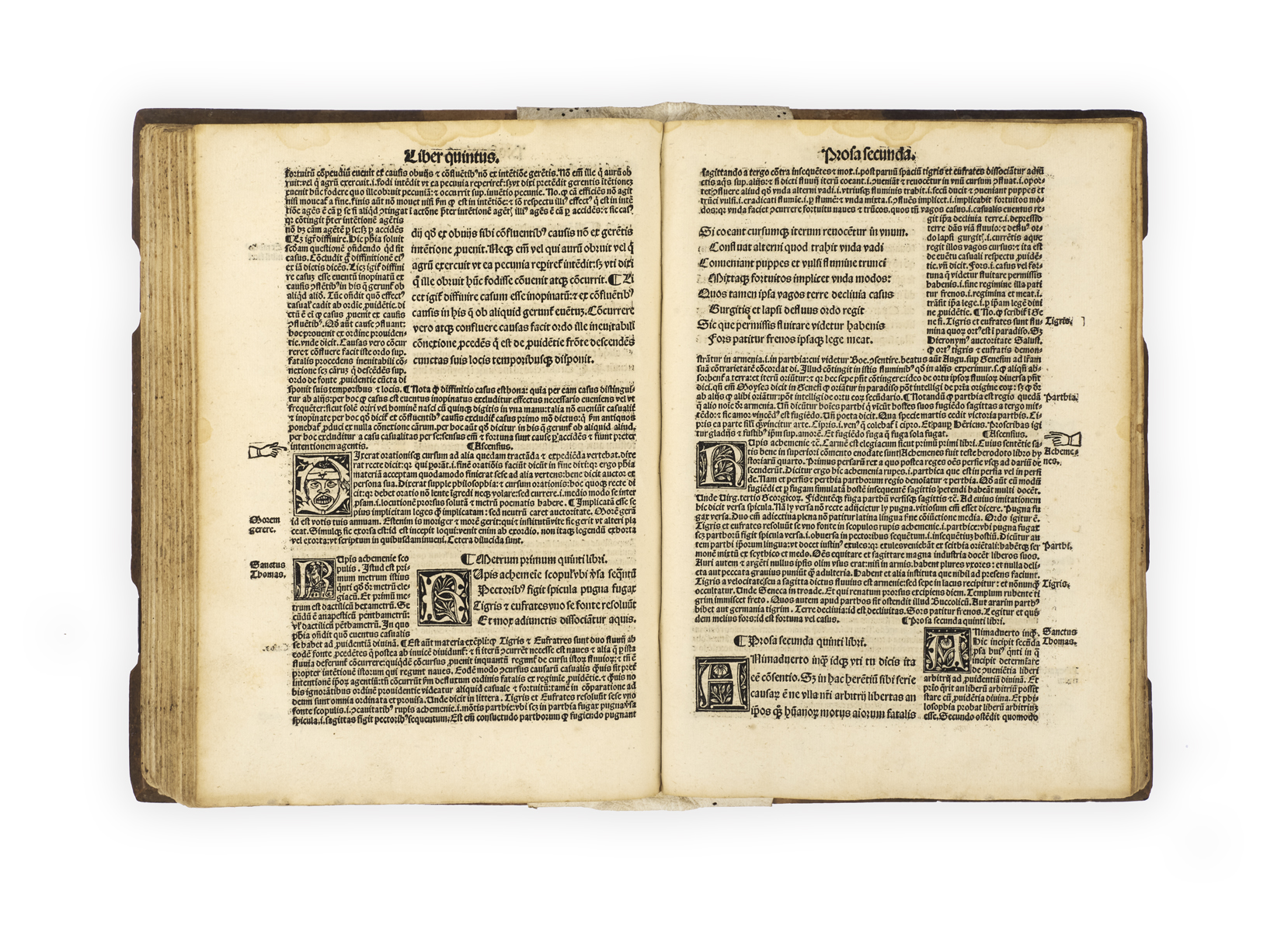
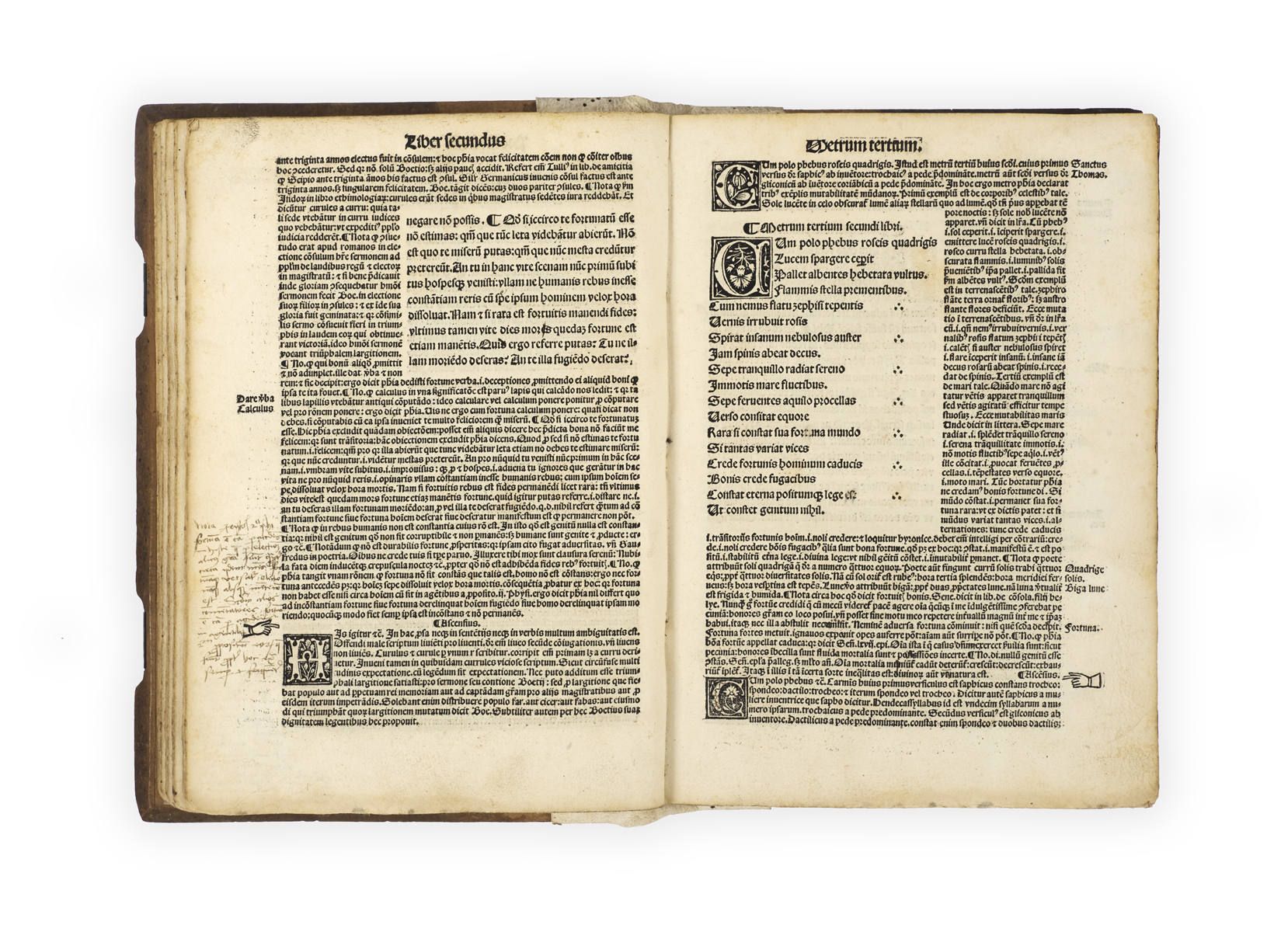
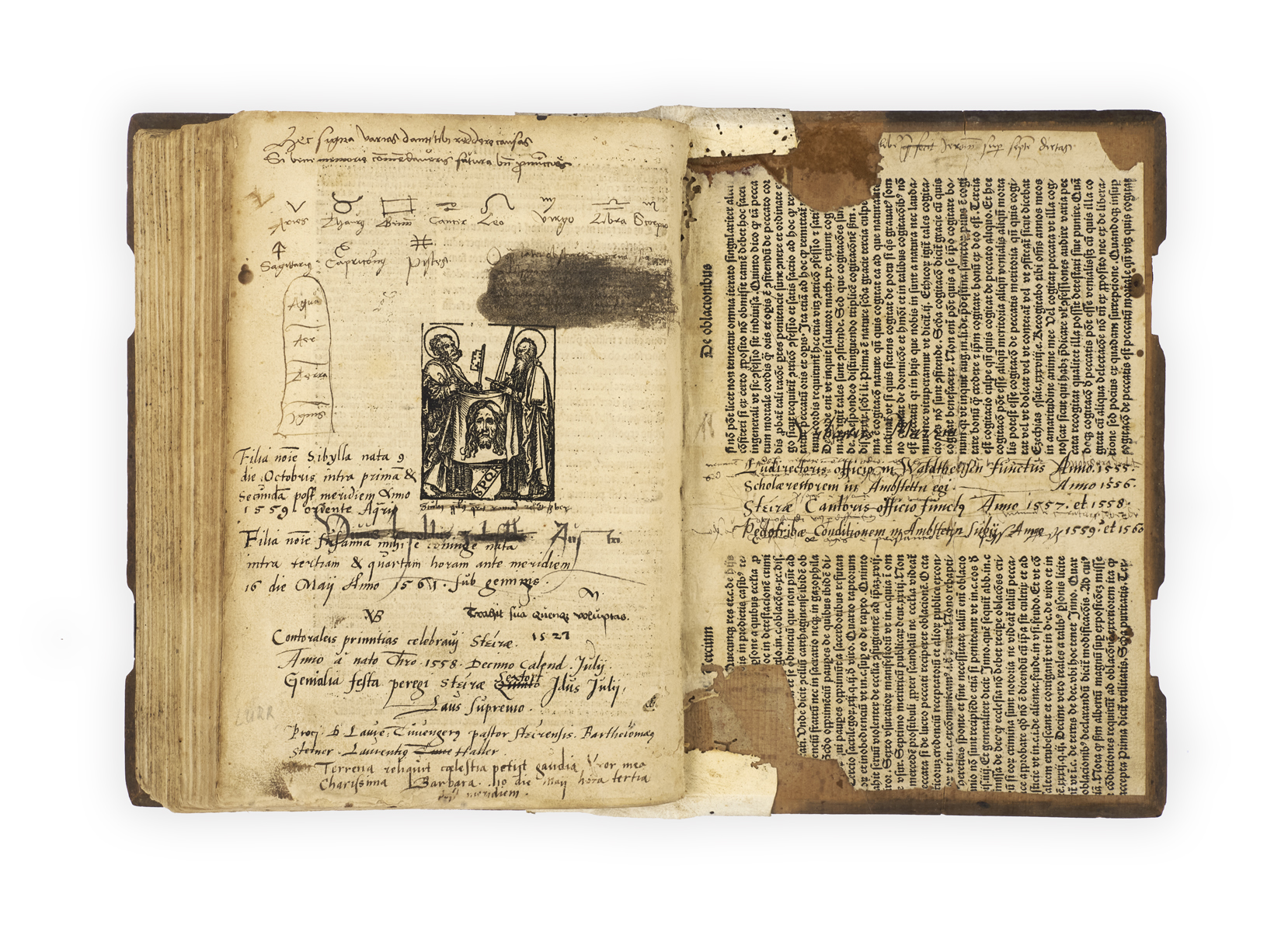
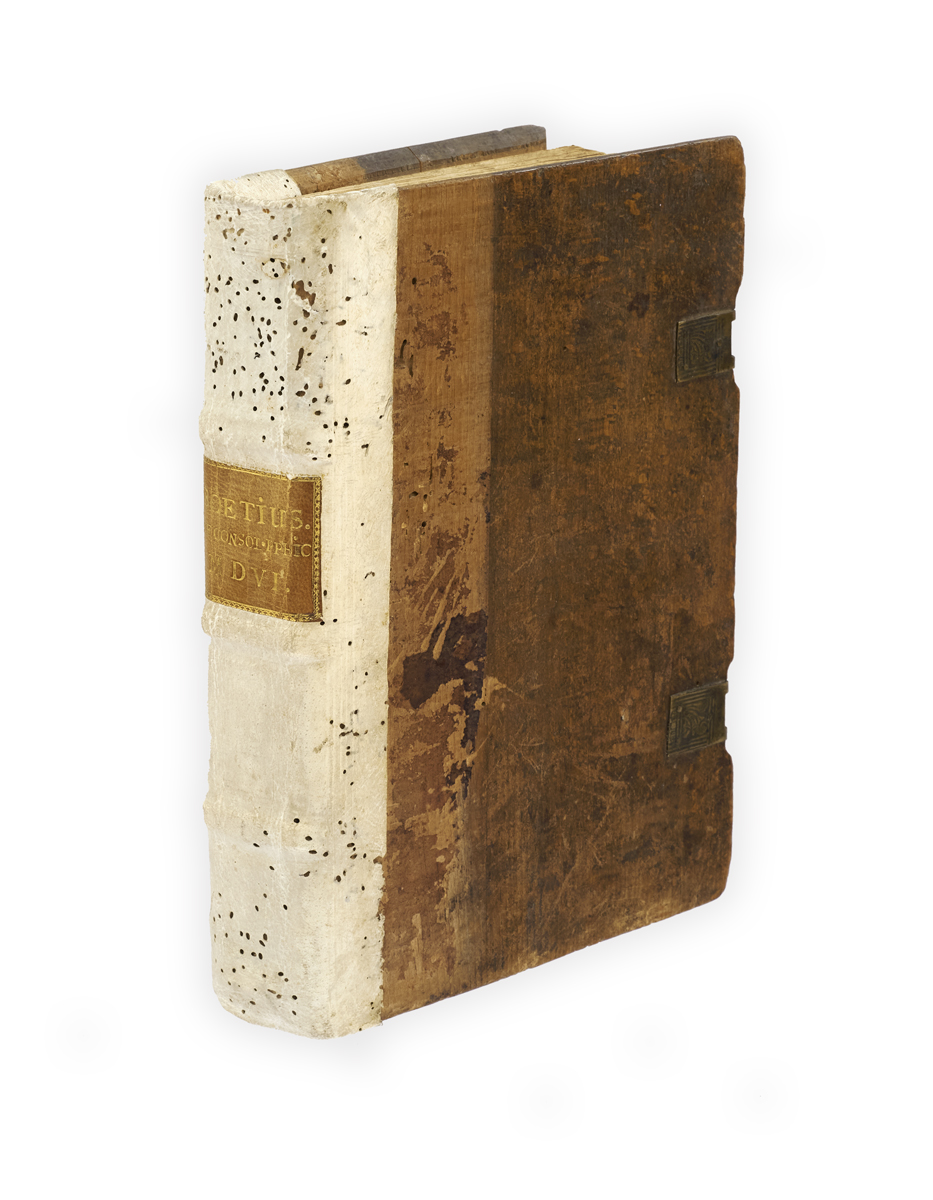
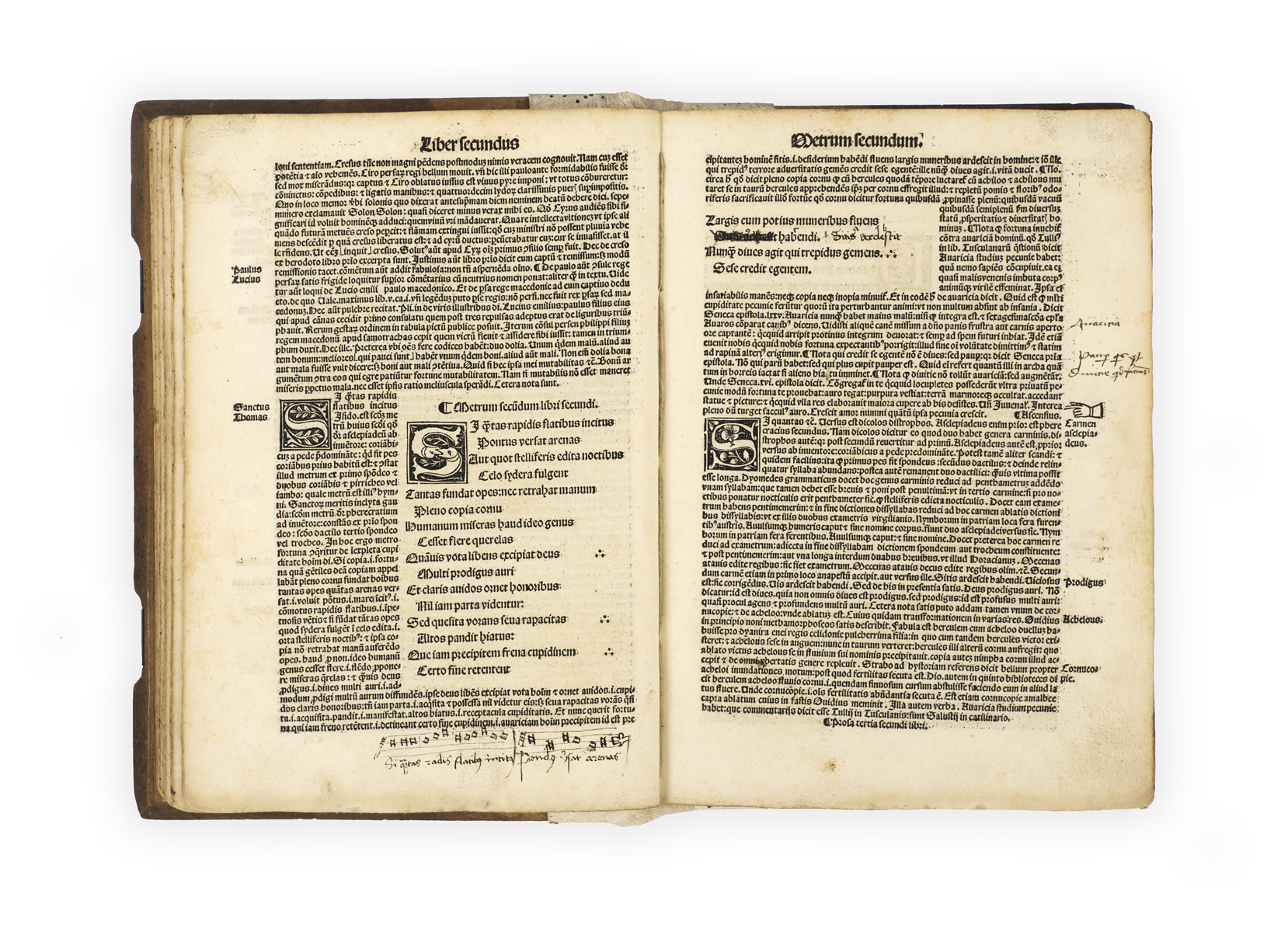
CONSOLATION INDEED
BOETHIUS, Severinus.
[De consolatione] Duplex commentatio ex integro reposita atque recognita in Boetium.
[Lyons, Claude Davost for Simon Vincent, 1506.]
4to, ff. [132], [28]; printed in blackletter, commentary printed in smaller font surrounding the text, title printed in red and black with two printer’s woodcut devices and large white-on-black woodcut initial, printer’s woodcut variant device at end showing Peter and Paul holding the Shroud, woodcut initials and printed marginal indices throughout; extensive sixteenth-century inscriptions and notes on title and final leaf, including an astrological chart, marginal annotations in two early hands to the text, and a brief phrase of musical notation, many other inscriptions carried over on the pastedowns; bound in contemporary German oak boards, brass catchplates to fore-edge (leather clasps perished), the original tanned spine replaced in the seventeenth century with German allum-tawed pigskin, sides roll-tooled in blind, eighteenth-century gilt-lettered red morocco label to spine, pastedowns reusing printed waste from a sixteenth-century canon law text, spine lined with vellum manuscript waste; worming to spine, lower board sometime split and neatly repaired; with much evidence of early ownership (see below).

Added to your basket:
[De consolatione] Duplex commentatio ex integro reposita atque recognita in Boetium.
Annotated copy of a scarce edition of Boethius’s De consolatione philosophiae edited and commented on by Jocodus Badius Ascensius, with another commentary once attributed to Thomas Aquinas. The annotations, contemporary with the book, are carried out by two hands, one in brown and one (more succinct) in red ink. They pertain to the monastic ownership period of this book, with evidence from inscriptions on the title-page placing it at the Benedictine monastery of Garsten in Austria.
The book abounds in evidence of provenance and early ownership. On the title-page, among several notes, an inscription dated January 1516 records the incarceration and trials of one brother Leopoldus; it is followed by the ownership inscription of Benedictine monk Urban Marzin of Garsten Abbey (Austria), who received the book in 1556 from a fellow monk named Michael; a later inscription belongs to one brother Sixtus Laurentius.
On the rear free endpaper the evidence suggests the passing of the book into the hands of a married man, who touchingly uses the book to record, in Latin, the salient events in his family life. There is a note of rejoicing and ‘supreme praise’ that the plague of sterility should have been vanquished, dated 1558; there follow joyful and proud notes of births: ‘a daughter named Sibylla was born to me … 9 October between 1 and 2 in the afternoon 1559 as Aquarius was growing’, ‘a daughter called Susanna was born to me between three and four in the morning, 16 May 1561 under Gemini’, and the sombre final note ‘My wife, my dearest Barbara left earthly things to rejoice in heavenly life, 10 May at 3 in the afternoon’, with zodiac signs sketched and named in the upper part of the page; the pastedown records special acts of piety performed by the same person, with dates, including a service of blessing for his then-barren wife. Other scattered inscriptions attest to a lively succession in early ownership of this very successful classic.
Library Hub finds a sole copy of this edition in the UK (Cambridge), and OCLC returns a sole copy in the US (Amherst).
Gültlingen II, p. 18: 16; Pettegree, Walsby, and Wilkinson, 58363; Renouard, Badius II, p. 201.
